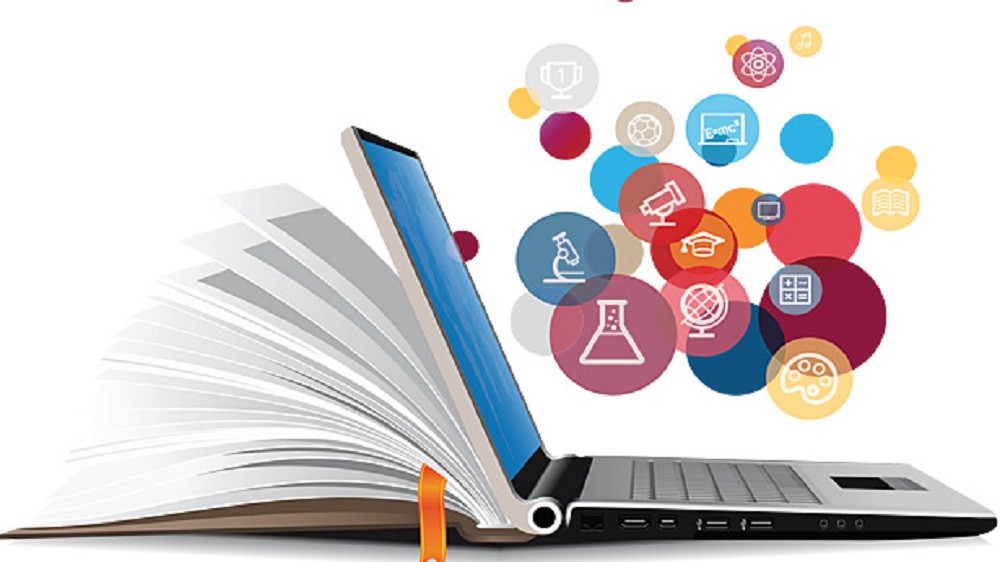Defining the Technology for Education and Learning
Defining the Technology for Education while ensuring that it remains inclusive, secure, and aligned with the evolving needs of learners.

In the digital age, technology for education has become an integral part of our daily lives, revolutionizing the way we communicate, work, and even learn.
The integration of technology in education has opened up new avenues for students and educators alike, transforming traditional classrooms into dynamic, interactive, and personalized learning environments.
In this blog post, we will delve into the multifaceted role of technology in education and learning, exploring its impact on teaching methods, student engagement, accessibility, and the future of education.
Accessibility and Inclusivity in Technology for Education
One of the most remarkable achievements of technology in education is its role in making learning accessible to a wider and more diverse audience. Through the use of online platforms, digital textbooks, and assistive technologies, students with disabilities can engage in learning experiences that were previously out of reach. Screen readers, text-to-speech software, and voice recognition tools have empowered students with visual or auditory impairments to participate fully in educational activities.
Additionally, technology has allowed for flexible learning environments, enabling students to access educational resources from anywhere in the world. This is particularly important for those who face geographical barriers, such as individuals in remote areas or those unable to attend traditional brick-and-mortar schools. Online courses and digital learning materials have democratized education, breaking down physical and financial barriers.
Personalized Learning
Technology has paved the way for personalized learning experiences, where students can tailor their educational journeys to their unique needs and preferences. Adaptive learning platforms use algorithms and data analytics to assess individual students' strengths and weaknesses, allowing educators to customize curriculum and resources accordingly. This not only enhances learning outcomes but also boosts student motivation and engagement.
Moreover, the availability of a wide range of educational apps and software means that students can choose the tools that suit their learning styles best. Whether it's interactive simulations, video tutorials, or gamified quizzes, technology offers a plethora of resources to cater to diverse learning preferences.
Interactive Technology for Education and Learning
Gone are the days of passive note-taking and one-size-fits-all lectures. Technology has ushered in an era of interactive learning that actively engages students in the educational process.
Virtual reality (VR) and augmented reality (AR) applications, for instance, allow students to explore historical events, dive into complex scientific concepts, or take virtual field trips to far-off places. These immersive experiences make learning more engaging and memorable.
Furthermore, online discussion boards, video conferencing, and collaboration tools enable students to interact with peers and instructors, fostering a sense of community and teamwork.
These interactions not only enhance comprehension but also develop crucial communication and social skills, which are increasingly important in the digital age.
Blended Learning
Blended learning, a combination of in-person and online instruction, has gained prominence thanks to technology. This hybrid approach provides the best of both worlds, allowing students to benefit from face-to-face interactions with instructors while also taking advantage of online resources and self-paced learning.
Blended learning can be particularly beneficial in higher education and professional development, where flexibility and practical application are key.
The COVID-19 pandemic accelerated the adoption of blended learning, with many educational institutions incorporating online components into their curriculum to ensure continuity during lockdowns.
This experience showcased the resilience of technology in maintaining educational progress, even in the face of unprecedented challenges.
Global Collaboration in Technology for Education
Technology has transformed the way students collaborate and communicate with peers around the world. Through video conferencing, collaborative software, and online project management tools, students can work on joint projects with counterparts from different countries and cultures.
This not only broadens their perspectives but also teaches them valuable skills in teamwork, cross-cultural communication, and problem-solving.
Additionally, access to online resources and courses from top universities and institutions worldwide enables students to learn from the best and stay updated on the latest advancements in their fields. The global reach of technology in education expands horizons and fosters a spirit of curiosity and lifelong learning.
Data-Driven Decision-Making
The collection and analysis of data are becoming increasingly important in education. Technology allows educators to gather valuable insights into student performance, engagement, and learning patterns. This data-driven approach enables teachers to identify areas where students may need extra support and tailor their instruction accordingly. It also helps in tracking progress over time and assessing the effectiveness of teaching methods and curriculum.
Furthermore, institutions can use data to improve administrative processes, optimize resource allocation, and make evidence-based decisions about their educational programs. This integration of data analytics in education has the potential to enhance efficiency and educational outcomes on a large scale.
Challenges and Concerns
While the role of technology in education is undeniably transformative, it comes with its share of challenges and concerns. One of the primary concerns is the digital divide, where not all students have equal access to technology and high-speed internet. This can exacerbate educational inequalities, leaving disadvantaged students at a disadvantage.
Additionally, there are concerns about the potential for technology to diminish the role of educators or compromise student privacy. It's crucial to strike a balance between technology and human interaction in the learning process and to implement robust privacy safeguards to protect students' personal information.
Another challenge is the fast-paced nature of technological advancements, which can make it difficult for educational institutions to keep up with the latest tools and trends. Ongoing professional development for educators is essential to ensure that they can effectively integrate technology into their teaching methods.
The Future of Education
The future of education is undeniably intertwined with technology. As technology continues to evolve, so too will the ways in which we teach and learn. Here are some key trends and possibilities for the future of education:
a. Artificial Intelligence (AI) and Machine Learning: AI-powered tutoring systems and chatbots could provide students with instant assistance and personalized feedback. Machine learning algorithms will continue to refine adaptive learning platforms.
b. Virtual Reality (VR) and Augmented Reality (AR): These technologies will become more immersive and accessible, allowing for even richer educational experiences, from virtual labs to historical reenactments.
c. Blockchain and Credentialing: Blockchain technology may revolutionize the way academic credentials are verified, making it easier for employers to trust the qualifications of job applicants.
d. Lifelong Learning: The concept of lifelong learning will become more integral as technology reshapes industries and job requirements. Continuous upskilling and reskilling will become the norm.
e. Globalization: Technology will further connect students and educators across borders, leading to more international collaboration and diverse learning experiences.
Technology has transformed education and learning in profound ways, making them more accessible, personalized, and engaging.
From adaptive learning platforms to immersive virtual experiences, the possibilities are vast and continually evolving.
However, as we navigate this digital transformation, it's essential to address challenges such as the digital divide and privacy concerns while ensuring that technology enhances, rather than replaces, the role of educators.
Ultimately, the future of education promises to be a dynamic and inclusive landscape, where technology empowers learners of all ages to reach their full potential.
What's Your Reaction?
















